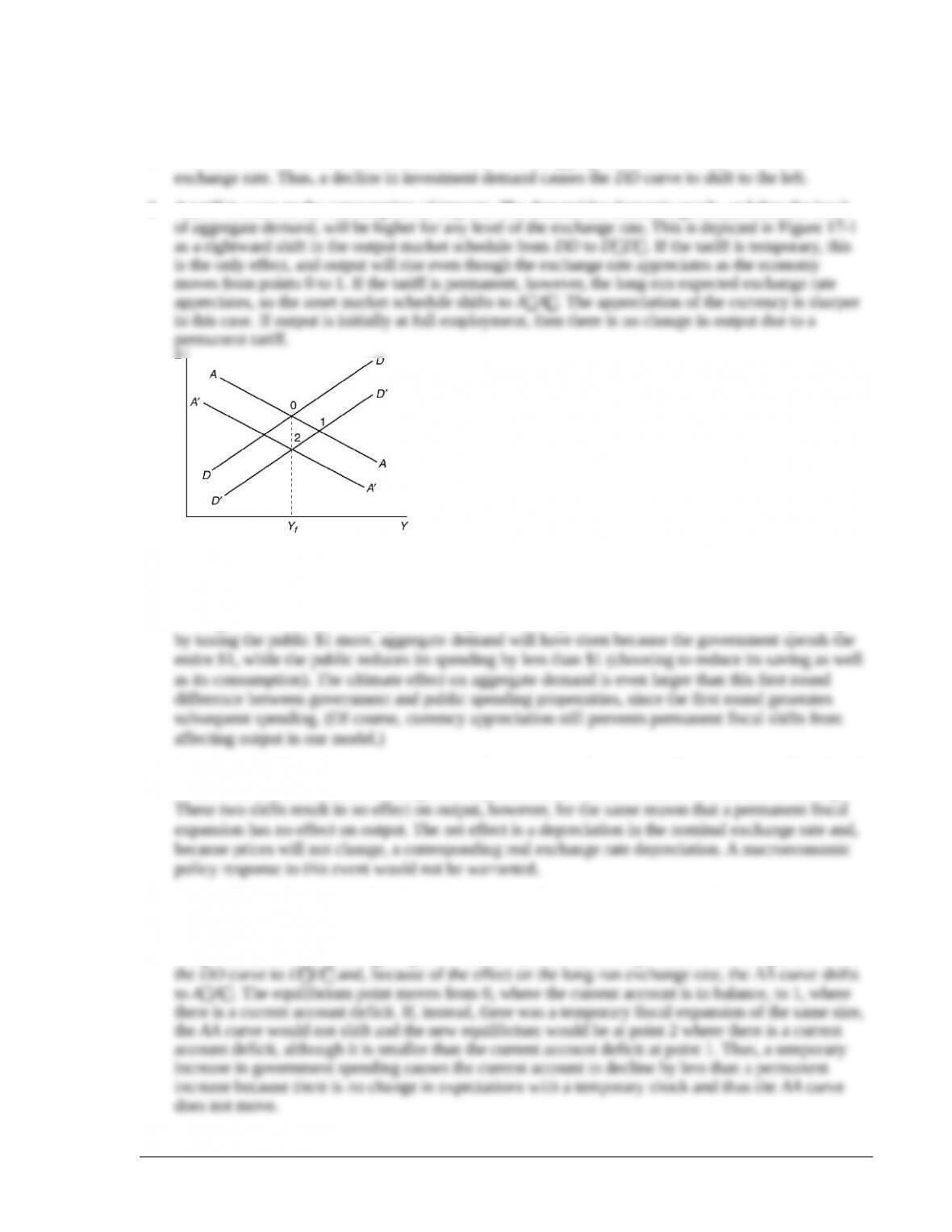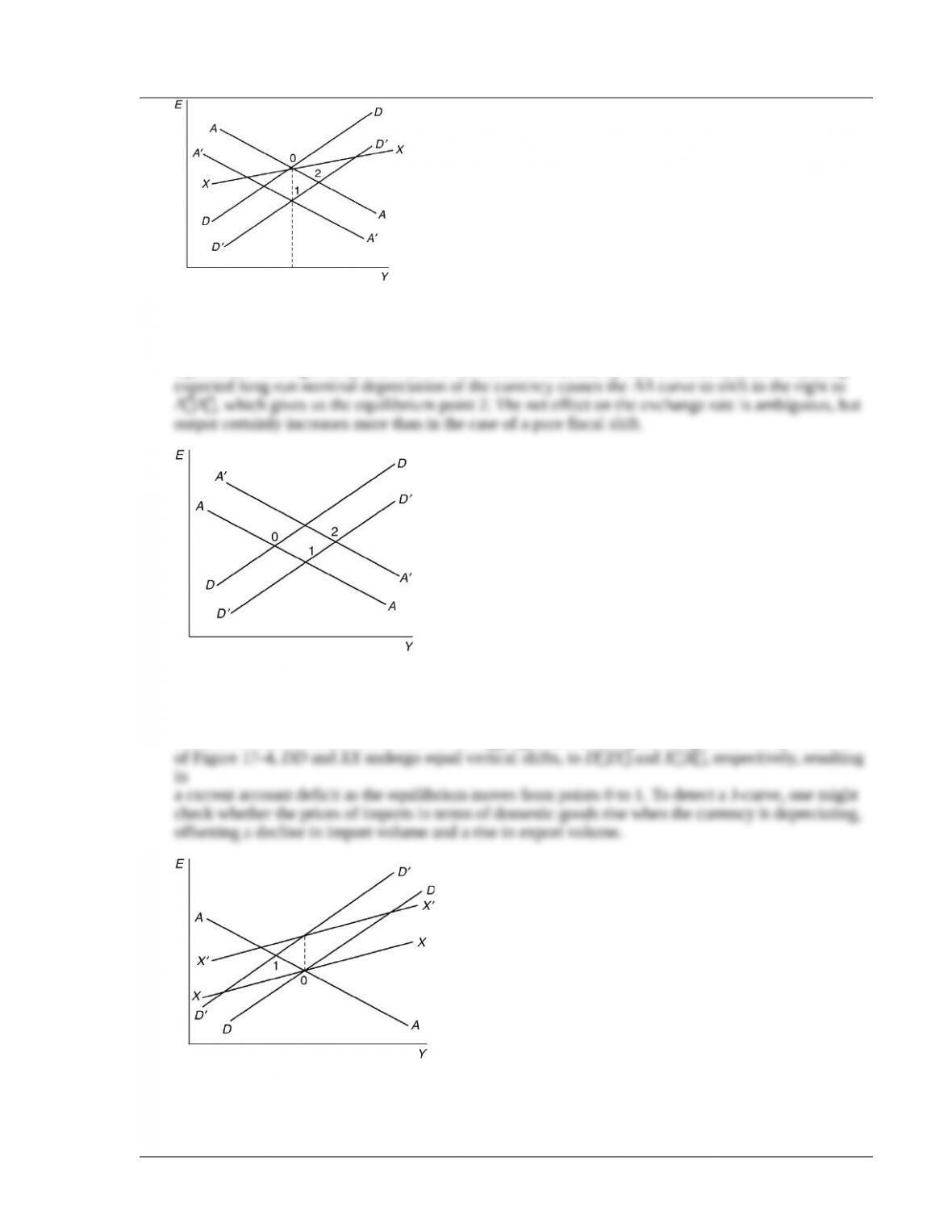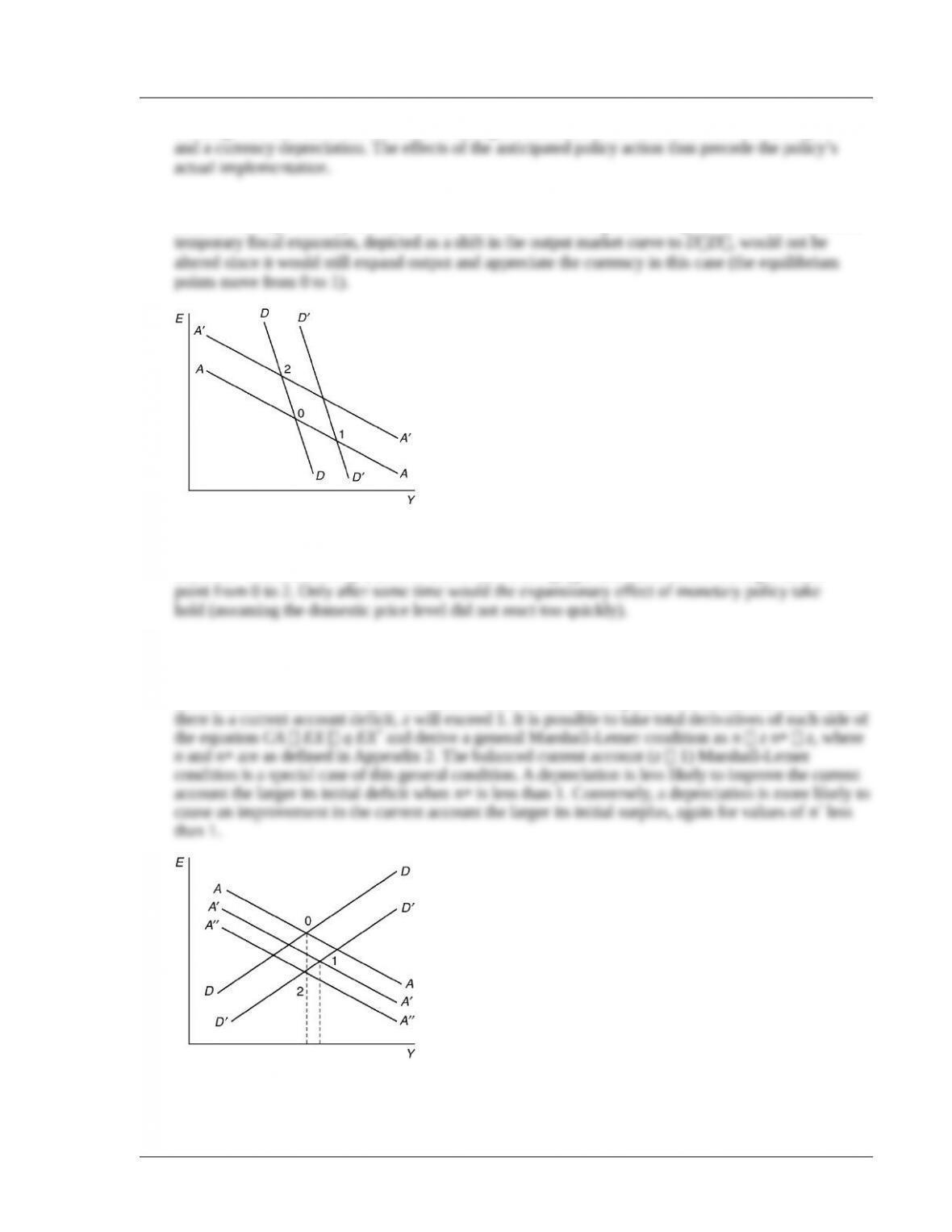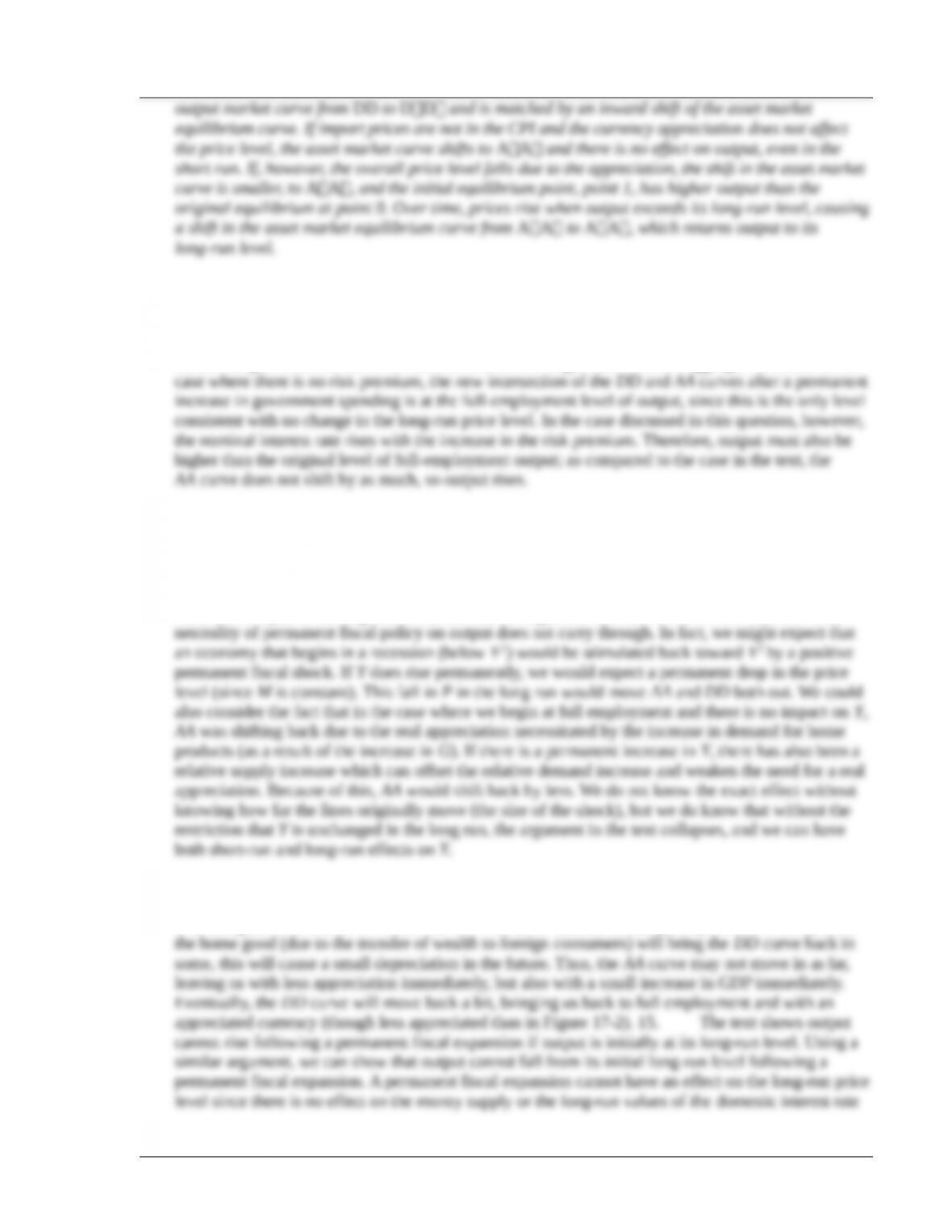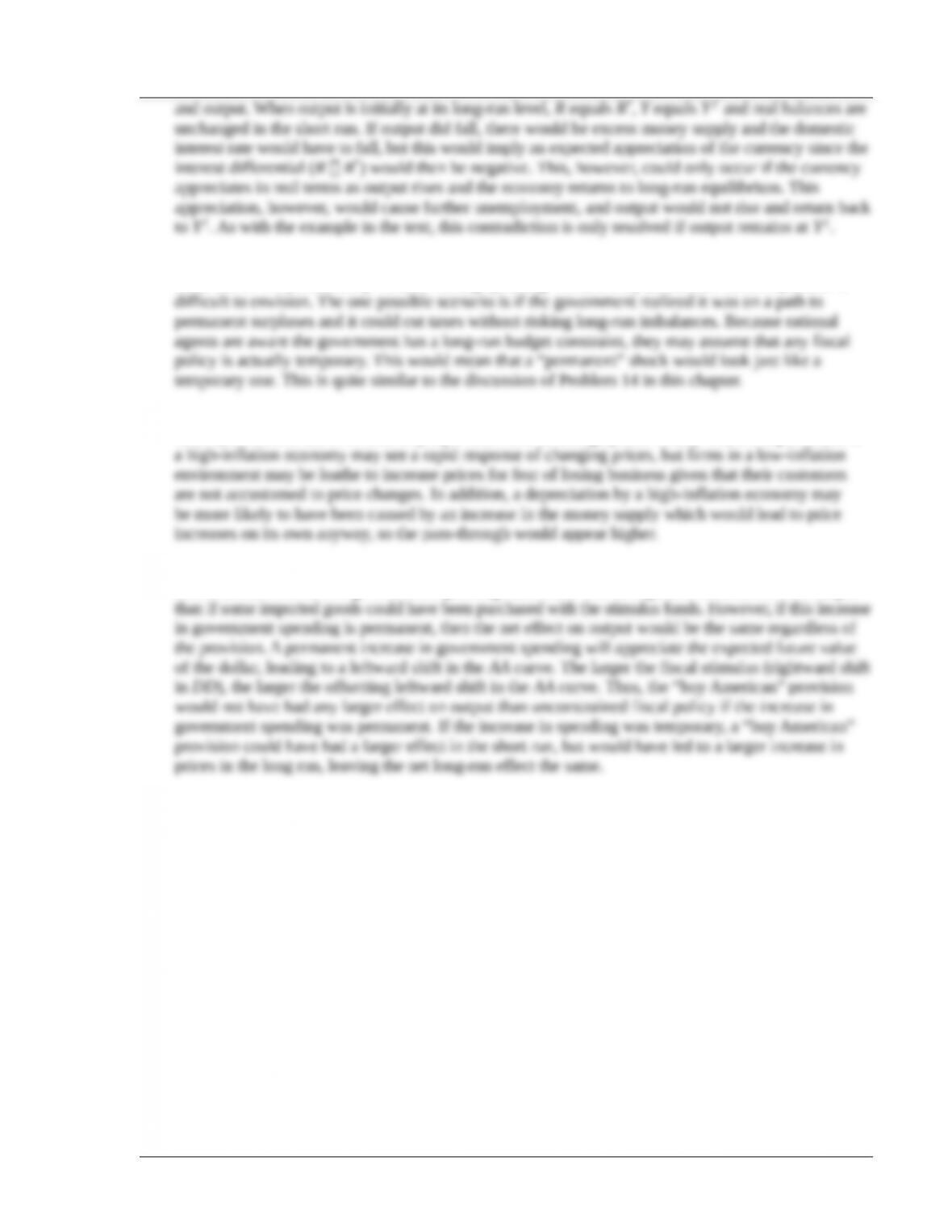Chapter 17 Output and the Exchange Rate in the Short Run 90
8. The expansionary money supply announcement causes a depreciation in the expected long-run
exchange rate and shifts the AA curve to the right. This leads to an immediate increase in output
9. The DD curve might be negatively sloped in the very short run if there is a J-curve, though the absolute
value of its slope would probably exceed that of AA. This is depicted in Figure 17-5. The effects of a
Figure 17-5
Monetary expansion, however, while depreciating the currency, would reduce output in the very
short run. This is shown by a shift in the AA curve to AA and a movement in the equilibrium
10. The derivation of the Marshall-Lerner condition uses the assumption of a balanced current account to
substitute EX for (q EX*). We cannot make this substitution when the current account is not initially
zero. Instead, we define the variable z (q EX*)/EX. This variable is the ratio of imports to exports,
denominated in common units. When there is a current account surplus, z will be less than 1, and when
Figure 17-611. If imports constitute part of the CPI, then a fall in import prices due to an
appreciation of the currency will cause the overall price level to decline. The fall in the price level
raises the real money supply. As shown in Figure 17-6, the permanent fiscal expansion will shift the
© 2012 Pearson Education, Inc. Publishing as Addison-Wesley
